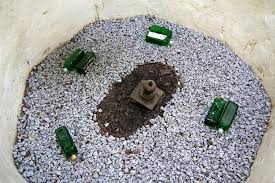There's something that really resonates with me about being in Kumasi. The history of the Asante people is filled with unity and resilience. After centuries, the Asante culture is still so rich and valued. And the people... I swear, I have never met such kind, warm people in my whole life. I feel at home here. There's a true sense of community.
Last night, at the hotel, I ended up talking to Emmanuel, the bartender, for hours. He's from Bolga, which is way up at the top of Ghana, bordering Burkina Faso. He has two daughters and moved to Kumasi for work purposes, though he visits his family regularly. But we got deep. I laid out America's deep-rooted race problems. We discussed Ghanaian politics (which I'm starting to get pretty well-versed in.) We both agreed that the two-party system is outdated and non-functional in Ghana and the US, and that governance doesn't ever really reach the masses. We talked about poverty. He was so surprised about the economic realities in the US for so many people, and that we too, have homeless people, and that our government doesn't care about poor people. Our conversation was pretty dim, but enlightening, and it felt like we were old friends.
Today, we explored Kumasi. It was magnificent.
We first visited Okomfo Anokye hospital, where the famous Asante sword remains in the ground. This is a sacred place for the Asante people. Okomfo Anokye, a leader of the Asante people, placed the sword in the ground to signify unity. He stated that if the sword is ever removed, that will be the end of the Asante people. Until 1995, people have tried to pull the sword from the ground, including Muhammed Ali (to no avail, of course).
We also toured Manhyia Palace, the original palace of the Asantahene (King of Asantes.) The Asante are the oldest tribe in Ghana, and proved serious competitors to the European colonizers. Although, had colonization and the slave trade not commenced, it is believed that Ghana would be Asante region and Twi the official language.
My favorite stop was the Center for National Culture, where Kumasi's finest art was displayed. There were artists selling paintings, sculptures, pottery, jewelry and clothes. The Adinkra symbols are prevalent in jewelry and accessories. They are symbols created by the Asante people and have specific meanings relating to God, hope, the past, etc. Later on, we visited a place where they create the dye to imprint the Asante sashes with these symbols.
I was drawn to the Sankofa bird, a well-known symbol of bird looking backwards. As you move forward, you bring the past with you.



No comments:
Post a Comment